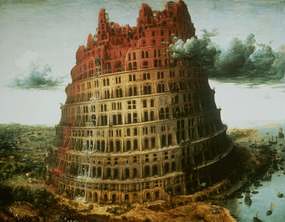The Great Wall of China – Why the Wall?
(Continued from: The Great Wall of China - On walls in general)
 Shortly after the unification of China (221 B.C.), with Ch’in’s proclamation as the sole ruler and his becoming the first emperor of the country, an army of 300 thousand men was sent to quell the barbarians in the north. With this task accomplished, Ch’in’s new concern was how to keep his territory safe from all inner and outer dangers. Thus there were a great number of reasons for building the Wall, which later on would be called Wan li chang chen, or better the long wall of 10,000 li (a li being approximately one third of a mile). The most common of these reasons, as generally believed, was to keep the territories of China proper safe from the hordes of northern barbarians, and in an age where man’s chief military weapons were swords, arrows, bows, hooks, spears and lances the building of such a kind of structure must have seemed a sensible idea. In keeping with this thinking, we can find written evidence in three different periods, in these proofs the imperial ministers suggest building a wall against the nomadic tribes and to settle a garrison who would maintain themselves by means of farming:
Shortly after the unification of China (221 B.C.), with Ch’in’s proclamation as the sole ruler and his becoming the first emperor of the country, an army of 300 thousand men was sent to quell the barbarians in the north. With this task accomplished, Ch’in’s new concern was how to keep his territory safe from all inner and outer dangers. Thus there were a great number of reasons for building the Wall, which later on would be called Wan li chang chen, or better the long wall of 10,000 li (a li being approximately one third of a mile). The most common of these reasons, as generally believed, was to keep the territories of China proper safe from the hordes of northern barbarians, and in an age where man’s chief military weapons were swords, arrows, bows, hooks, spears and lances the building of such a kind of structure must have seemed a sensible idea. In keeping with this thinking, we can find written evidence in three different periods, in these proofs the imperial ministers suggest building a wall against the nomadic tribes and to settle a garrison who would maintain themselves by means of farming:The Xiongnu live on meet and cheese, wear furs, and posses no house or field. They move like birds and animals in the wild. They stop only at places which abound in grass and water, want of which will start them moving again. Today the Xiongnu are herding at several places and hunting along the frontiers, confronting Yandai, Shangjun, Beidi, and Longxi, waiting for a chance to make an intrusion once the garrison troop are decreased. Your Majesty is concerned about the border troubles. It will be profitable to you to dispatch generals and officials together with troops to govern the frontier areas. People should be selected to settle along the borders areas permanently, who can set up families and grow food grains while getting prepared against possible invasion by the Xiongnu. Then we can have high walls built with deep ditches dug, and we can prepare boulders and roadblocks inside the walls. At strategically important points and passes we can set up minor cities with a thousand households each. [During the Han dynasty second century B.C.]
[Seven centuries later]
The Northern Di people are brave but ignorant. They excel at field operations, but their weak point is the assault on the cities. We must avoid their strong point while taking advantage of their weakness. The Di people live scattered in the open country by pounds and they are often on the move in search of grass and water. We ought to build the wall along the terrains north of the six strategical posts in order to stop the northern tribes. This wall, once completed, will bring profit for centuries. At the strategic points we can set up passes, beside each of which we shall build a small city. When the Di people come, we can defend the frontiers making use of the city and the garrison troop. If they do not come to take the city, they will get nothing; they will surely leave when they find themselves short of grass. [During the Northern Wei dynasty 487 A.D.]
[And again, another seven centuries later]
The minorities in north China who lead a nomadic life, and excel at horsemanship and marksmanship, often attack and plunder the border areas, coming and going unpredictably. In the past dynasties troops were stationed there to guard the frontiers. We must make use of natural barriers such as mountains and rivers. Man-made barriers ought to be set up along the strategically important terrains. Our country has driven away the intruders, the Rong and Yuan, and is now unified. To hold our land together, we should set up a series of strategic posts – zhen – and station troops at each. [During the Ming dynasty 1408 A.D.] [1]
[1] Lou Zewen, The Great Wall, McGraw-Hill Book Company, England, 1981, p. 42, 43 and 49.
[2] Peter Lum, The Purple Barrier The Story of the Great Wall of China, Robert Hale Limited, London, 1960, p. 20.
[3] Jonathan Fryer, The Great Wall of China, New English Library, London, 1975, p. 50.




0 Comments:
Post a Comment
<< Home